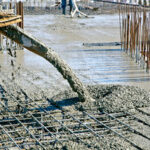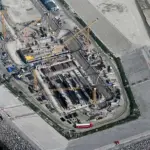The versatility and durability of a material matter when it comes to construction projects. One crucial component is concrete, which works well for different structures regardless of the project size. You can use it for large-scale construction ventures or minor DIY projects at home, but understanding its fundamentals matters. This makes you have a robust construction that will serve for ages. This blog post covers the key things to consider for a successful concrete project.

Temperature Considerations
Prioritizing action plans against significant tangible challenges is crucial after rigorous planning and execution. The need for a sound mitigation strategy arises from the fact that temperature-based hitches are far more frequent in concrete structures. The process of curing is greatly impacted by the change from cold to scorching heat, and problems are bound to occur.
Concrete shrinkage is one main problem that gives rise to cracks on a surface and needs quick troubleshooting. It arises when water from the concrete is lost through evaporation. When this happens, the drying process leads to the formation of faults; luckily, there are several solutions to this. You could use control joints or even go for reinforced concrete. Much focus should also go to the water and cement content you use during the mixing. Not sticking to the proper proportions often causes problems.
The Basics of Concrete
Before venturing into the project, the Cascade Concrete Sawing team can guide you on the significance of aggregates, water, admixtures, and cement. Getting it right helps you come up with the right combinations, which add to the stability of a structure. The aggregates are generally the granular materials that you mix with the cement. This includes the likes of sand and gravel, though some use crushed stones; what you choose as the aggregate will impact the aesthetics and strength of the final product.
On the other hand, cement plays the role of a binding agent in your concrete. This fine powder forms a paste upon mixing with water, which then solidifies. You need to work with the right amount for the results to be excellent. The paste then binds with your aggregates, increasing the concrete’s density and robustness. Also, note that different types of cement are meant for specific applications.
At times, it’s necessary to have additional materials in the form of admixtures. These supplies come in to enhance the specific properties. For instance, they can boost strength, minimize water requirements, and enhance workability. Retarders, plasticizers, and air-entraining agents are among the dominant admixtures in projects.
Planning Your Concrete Project
This is where you develop the proper scope for the different construction stages. Most importantly, define the purpose, size, and any specific requirements the final structure should have. This way, there will be no struggles in calculating the quantity of concrete needed for the whole venture.
In your planning, consider the necessary approvals and permits for the project. Engage the local authorities for information on the fees, documents, and steps you must follow. By being compliant with the local building codes and regulations, you’ll save yourself from legal troubles, which can halt everything.
Another important aspect is financial needs. Have a clear outline of the costs by setting a reasonable budget. Let it capture the correct labor, materials, and rental machinery expenses. Be flexible with your budget to accommodate additional costs that emerge during the work.
Like Us on Facebook!
Your planning work can only be completed with a thorough understanding of the concrete mix design. Look for the right mix while emphasizing the exposure conditions and strength specifications. Don’t forget about aesthetic preferences.
Subscribe Us on YouTube!
Finishing and Maintenance
A sound project is not only solid but also looks incredible. This is why investing in the finishing work is paramount. You have several options for the methods you can use for that final appealing look. If you want a clean and well-polished surface, opt for the smooth finish; it’s usually suitable for indoor applications.
For your walkways and driveways, you may opt for a non-slip surface; hence, the broom finish becomes essential. What’s crucial is ensuring the cleaning work will be seamless and easy to maintain. Conversely, the stamped finish may be your choice when you want an appearance that mimics natural materials such as stones and pebbles. The exposed aggregate finish is another economical option, as you only expose the texture and color of the aggregates.
While in the finishing phase, use the best sealing materials for the concrete surface. This gives it protection from stains, weathering, and moisture. Take time to evaluate the nature of traffic at the surface before deciding on the task. It helps you avoid reworking the surface due to leak issues.
After everything is set, you ought to do proper maintenance work, as it extends the lifespan of the concrete. One perfect way is to do thorough cleaning on the surface. Proactively check for cracks and deterioration signs and act fast.
Endnote
Making your next concrete project unique is easy when you stick to the best practices. Take time to understand the mixing work well, as it gives the concrete its desired properties such as strength and workability. You must also consider the whole project, as it guides the amount you’ll be working with. Remember to also concentrate on the finishing work, as it influences the aesthetics of the structures.

















